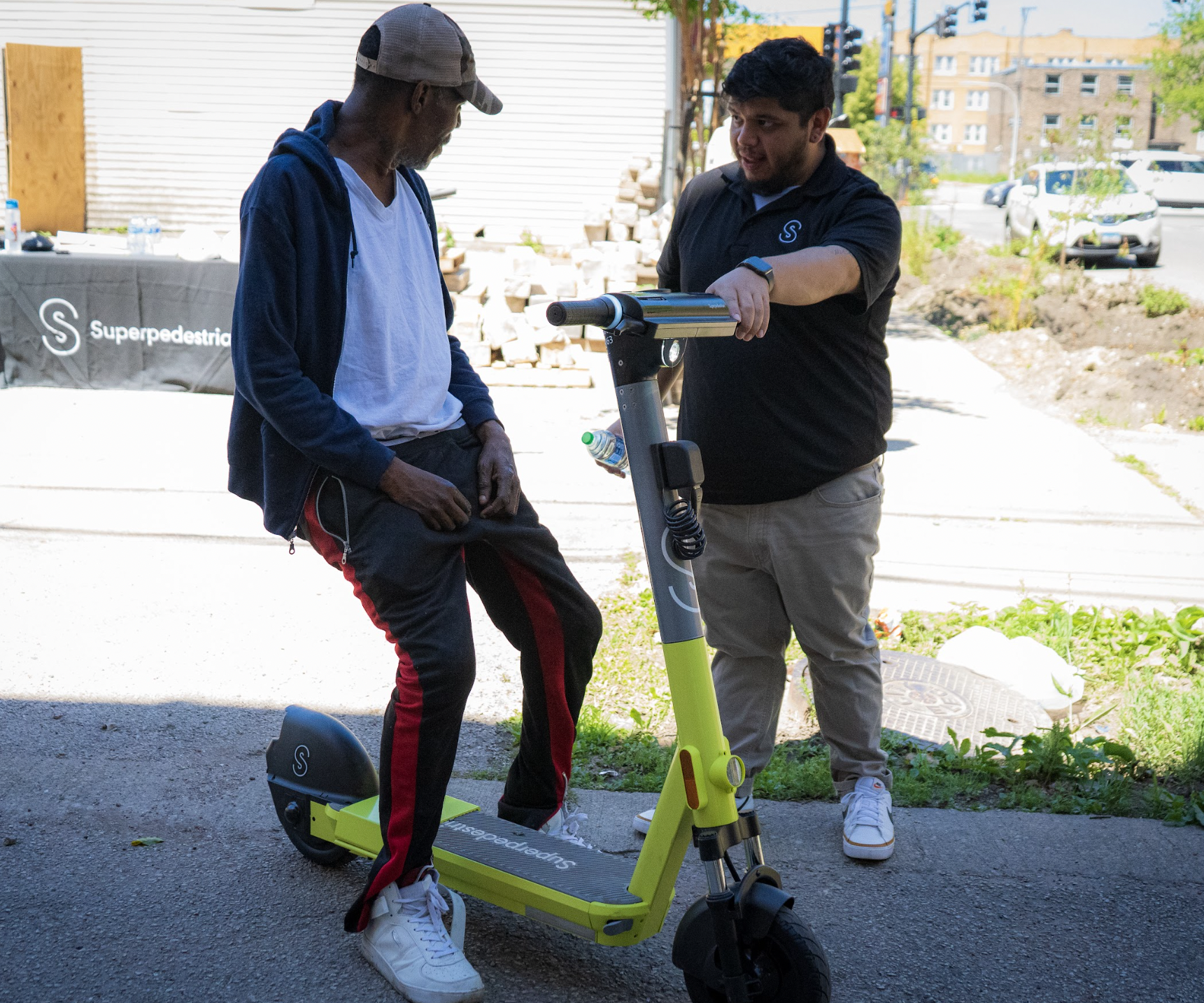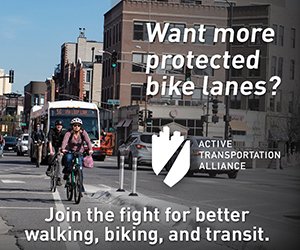
by Patrick Spauster and Cameron Bolton
Data from the Chicago Department of Transportation's electric scooter program shows booming ridership, with 1.5 million trips last year. But most e-scooter rides happen downtown, despite goals to deploy scooters in the city’s “equity priority area,” which includes large swaths of the South and West sides.
The program, which ran two pilots in 2019 and 2020, launched in full in Spring 2022 with an eye towards equity. The city requires that its dockless scooter vendors place at least half of their scooters in the “equity priority area,” a zone drawn by the city to direct resources to historically disinvested areas, home to some of Chicago’s poorest neighborhoods and transit deserts. But just placing scooters somewhere doesn’t mean residents ride them.
Among both docked and dockless rides, wealthier, whiter neighborhoods in downtown and on the North Side saw more trips than neighborhoods in the equity priority area. That's despite more than half of dockless scooters being deployed in the priority area. The gap is particularly stark on the South Side, which has relatively little cycling infrastructure.
Ride location, equity priority area, and community area data from the city of Chicago Open Data portal. Code available on Github.
“We don't want people in our neighborhoods to feel like they are only putting them here because the city mandates them to and these scooters are not really for us, they're for people downtown and for white people, [and] middle-to-upper-income people,” said Olatunji Oboi Reed, founder the North Lawndale-based mobility justice organization Equiticity, which is working to increase scooter use in communities of color.
The data, released last July, covers May to December 2022 and shows half of the e-scooter rides used the downtown-based docked Divvy scooter system. Lyft manages the city-owned Divvy network, which also includes bike-share cycles that are available citywide. Three other vendors, Lime, Spin, and Superpedestrian, control fleets of dockless scooters spread throughout the city. The city requires dockless scooter operators deploy at least half of their scooters in the equity priority area. There is no ridership metric they are required to reach.
While all the dockless vendors contacted by Streetsblog reported deployment compliance, last year only 36 percent of the dockless scooter rides originated in the equity zone, according to analysis of location data by Streetsblog. In total, 82 percent of rides happened within the docked Divvy system or otherwise-outside the equity priority area. The priority area covers just over 40 percent of the city’s land area and about 40 percent of the population.

But if the city is requiring scooter suppliers to place at least half of their vehicles in the priority zone, why is the use of scooters lower there? Advocates say it’s because of a lower density of protected bike lanes (which are legal to ride e-scooters in); inconsistent community engagement and education; and a hands-off approach from the city.
“What helps us feel safe is barrier-protected bike lanes,” said Reed. “A significant amount of bike infrastructure serves predominantly white, middle-to-upper-income neighborhoods and not [lower-income neighborhoods of color.] And because of that, we don't feel safe riding a scooter in our neighborhoods.”
Zach Williams, director of policy and government partnerships at Superpedestrian cited an internal study that found in North Lawndale new riders were 2.5 times more likely to stick to the sidewalk, which is illegal, than in other neighborhoods. He said that's a sign that riders might be less comfortable on the roads in communities with fewer bike lanes.
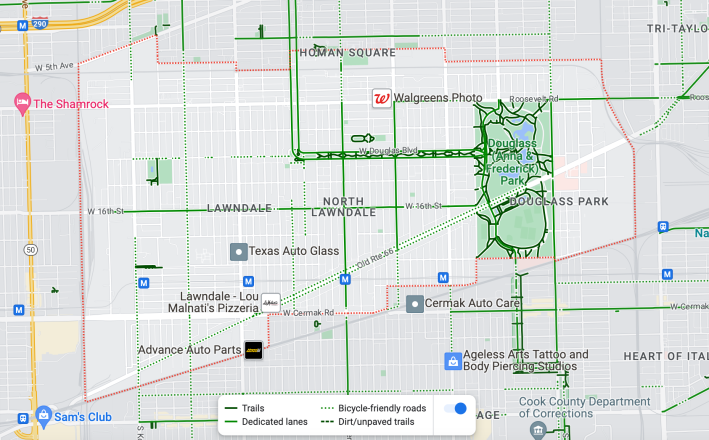
“We don't feel safe riding scooters on the street, mixing in with the cars," Reed said. "And because of the potential to interact with the police, we don't want to ride on the sidewalk because that's a reason to be stopped by the police."
Cost can also be a barrier for residents of the priority areas. The city requires vendors to provide affordable pricing plans. But per-minute pricing schemes might skew costs for lower-income neighborhood residents who have to commute further to work. On average, dockless scooter rides that originated in the equity priority area were 50 percent longer than dockless rides outside the area. That could be due to longer commutes, or steeper discounts offered in the equity priority area.
Lime automatically offers half-off all rides originating in the equity zone. But not all the vendor discount programs are automatic. Some require residents to learn about the discounts and register, which makes community engagement to promote these programs crucial.
The city requires scooter companies to conduct 26 education and outreach events each year, and 18 of them must be in the equity priority area. There are some signs that community outreach may be paying off.
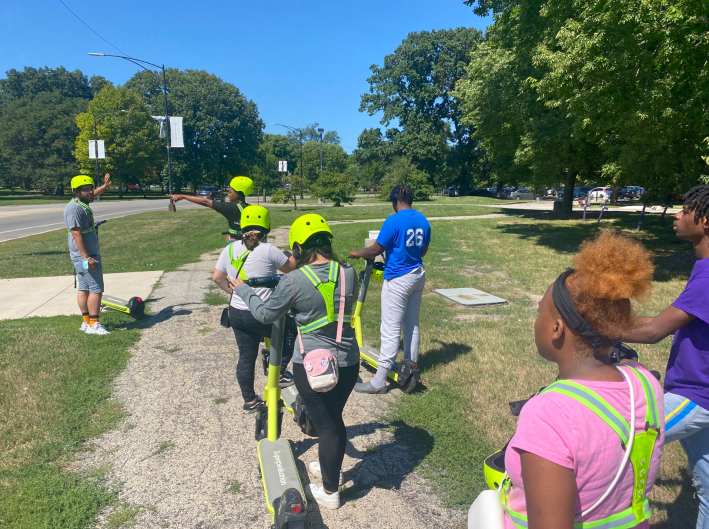
Representatives from CDOT, Lyft, Lime, and Spin told Streetsblog that the share of ridership in the equity priority areas increased from 2022 to 2023. CDOT reported that 42 percent of rides this year through August 17 originated in the priority area, greatly exceeding the 23 percent ridership rate from the 2020 pilot.
While ridership lags in the historically disinvested communities the city wants to serve, a representative from Lime said there is yet unmet demand for scooters. “You tend to see the vehicle utilization rate decline when you add more fleets [but] we’re seeing utilization increase," said LeAaron Foley, director of government and community affairs for the company. "That's showing us there is still unmet demand across the city.”
Still some social justice and sustainable transportation advocates say the city has a hands-off approach to community engagement that lets the vendors simply go through the motions when it comes to community outreach. “It seems like these scooter companies are trying to get by doing the bare minimum,” said Jeremy Cuebas, a transportation organizer with the Northwest Center community organization which serves the heavily Latino Belmont Cragin, Hermosa, and Portage Park neighborhoods.
Cuebas wants to see the city hold the vendors more accountable and improve follow up. The Northwest Center worked with Spin and Lime during the pilot, and even wrote in support of the vendors’ bids. But Cuebas says they never heard from the vendors again after the pilot ended.
Cuebas said the difference between superficial and meaningful community engagement is education: “People see the scooters on the street and don’t how to use them.” He argued that the communities Northwest Center serves requires more intensive community engagement because of language barriers and cultural differences. “Belmont Cragin is different than Lincoln Park.”
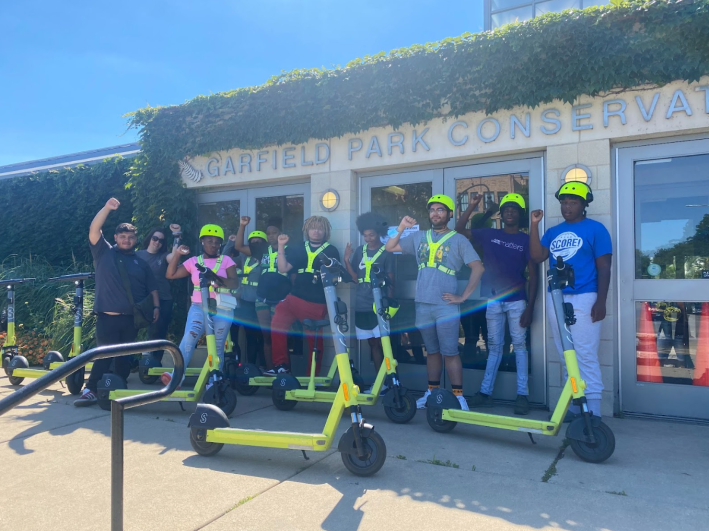
Reed and Equicity are trying to model meaningful community collaboration, hosting group scooter rolls that are designed to help educate new users, while being tailored to the culture of the specific community. “Engagement is this sort of check box," Reed said. "I showed up, a few people came, I did my part. Community ownership is the scooter operators and the city working in full partnership with community-based organizations and residents to envision, to plan, to execute, to evaluate."
Reed also wants to see more of a hands-on approach from the city. “Build it and they will come has never worked. Having a deployment metric is great. However, it doesn't go far enough... We’d love to see a ridership metric that the scooter operators must hit, and hitting those metrics requires investment.”

Did you appreciate this post? Please consider making a tax-deductible donation.
